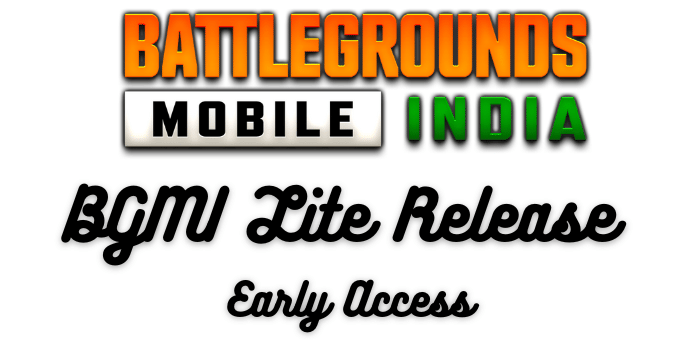Chat GPT Vs Bard AI Vs Co-pilot Vs BERT – Comparison & Future and many other aspects are discussed here. Artificial intelligence refers to the system’s capability to produce human-like capabilities and mimic human brain capabilities like reasoning, creativity, planning, and learning. Thereby it refers to a technology that has incorporated human intelligence in a machine and enabled various human actions to function.
Highlights
- Artificial intelligence and its uses
- Uses of Artificial intelligence
- What is ChatGPT?
- Limitations of ChatGPT
- What is BARD?
- Limitations of Bard
- What is Co-pilot?
- Limitations of Co-Pilot
- What is BERT?
- Limitations of BERT
- Comparison between ChatGPT and Bard
- Comparison between Co-pilot and BERT 200
- Future and Way forward
- For Bard:
- For ChatGPT
- For Co-pilot
- For BERT
- Conclusion
Artificial intelligence and its uses
The main goal of AI is to reduce human efforts, enhance computer learning and assist in data handling for multiple businesses. AI systems can understand the needs of their environment and can function accordingly. The Ai system can process information made available to them by the user or gathered through a camera or other sensors. AI systems can also analyze their actions’ outcomes and modify them based on the analysis.
The ability of artificial intelligence to reason and execute activities that have the best likelihood of reaching a particular goal is its ideal quality. Machine learning (ML), which refers to the idea that computer systems can automatically learn from and adapt to new data without being helped by humans, is a subset of artificial intelligence.

The AI market is rapidly increasing, and technology is becoming a part of our daily lives. In a report by Statista, it was estimated that by 2025 the AI market would reach the $126 billion mark.
Uses of Artificial intelligence
- It is being used for personalized shopping by recommending the customers various products based on previous purchases. In addition, AI-powered chatbots in online shopping websites help to create a more customer-friendly environment.
- Educators can use AI technology to create smart content and graphical representations of the topics they intend to explain. Top AI technologies are currently being used by students for personalized learning and by analyzing their growth from the virtual platform.
- Various automobile companies are using AI machine learnings to make the vehicles detect any objects in their near places and thus help them avoid accidents.
- AI filters are nowadays helping to segregate spam emails. AI technology helps to avoid the notification of spam emails, and currently, G-mail helps in the segregation of these emails by up to 99.9% of cases. Also, Apple is incorporating this segregation characteristic of AI in their iPhones to segregate and avoid unwanted notifications.
- Navigation and Robotics are other significant applications of AI technology. For example, the GPS is powered by AI technology. This technology uses a combination of Convolutional Neural Networks and Graph Neural Networks, thereby making detecting a location easier. At the same time, AI-powered robotics are used to create a humanized model of robots that can perform various tasks like serving food, cleaning, inventory management, and supplying goods to designated places.
What is ChatGPT?
In November 2022, OpenAI released ChatGPT (Chat Generative Pre-trained Transformer), a chatbot. Due to its capacity to quickly and thoroughly respond to various questions, ChatGPT quickly attracted the public’s attention. For example, through its official website, it can be observed that ChatGPt can write and debug computer programmes, compose music, poems, song lyrics, plots for plays, tales, answer test questions, play games, and simulate an ATM or a chat room. The fundamental role of ChatGPT was to deliver responses to queries by impersonating a human conversationalist.
Also, ChatGPT remembers the responses it has given in the past during talks, leading some users to believe that this technology can also be utilized as customized messaging. Also, it was thought by certain analysts that the ability of ChatGPT to remember its responses could be used to function as a personalized therapist.
Also Check: BGMI 2.4 Beta Update
Moreover, it costs nothing to use GPT chat. Therefore, OpenAI has released a premium version of Chat GPT in the US. ChatGPT Plus is the name of the premium edition of chat GPT. The paid edition of Chat GPT is available to users for USD 20 per month.
In contrast, those who don’t want to pay can utilize the app’s free version. By providing you with a list of websites pertinent to your queries, Google search assists you in finding suggested answers to your queries. Contrarily, ChatGPT provides you with direct responses that flow naturally. That is comparable to using a manual.
Limitations of ChatGPT
With the launch of ChatGPT, numerous comparisons between ChatGPT and Google searches have been made. Nonetheless, when using ChatGPT to gain answers, one should always conduct a thorough study. When you receive a response via ChatGPT, it is just raw text without any references to reputable sources, citations, or links. Therefore, before utilizing it, it is essential to double-check the responses.
However, its main flaw was noted to be its uneven factual accuracy. It was observed and acknowledged by OpenAI that GPT “sometimes provides plausible-sounding but incorrect or nonsensical answers”. Also, it was observed that GPT had little knowledge about the events that occurred after 2021.
It was also claimed that while training ChatGPT, human reviewers focused on long answers and completely ignored the accuracy. Another issue that gained hate comments and strong condemnations was a rap indicating that women and scientists of colour were inferior to male and white scientists.
What is BARD?
A conversational AI service called Bard was announced two years ago, and the software has already been put out for testing. According to the Google team, the main goal of Bard is to combine the vast knowledge bases with the strength, originality, and intelligence of the company’s already existing language models. Mr Sundar Pichai, the CEO of Google has stated that Bard can be utilized as an outlet for creative and curious discussions.
The capabilities and usability of Bard are still not very clear, but a screenshot shared by the Google team suggests that Bard will be equally free ranging as ChatGPT. The screenshot that was uploaded also encourages potential users to contact Bard with questions that are practical or linked to daily living, such as how to organize a baby shower or what kinds of meals to create based on the ingredients that are available.
LaMDA, a language model made available to Google through their AI test Kitchen app, released in May 2021, serves as the engine for Bard. It has been mentioned that Bard will include a lightweight version of LaMDA, indicating that it will use fewer processing resources. As a result, this version will only work under certain parameters and output content relevant to a few queries.
Limitations of Bard
In a bizarre incident that took place at the launch event of Bard, it was found that Bard was providing wrong answers at the Bard launch event, where Google uploaded a video to advertise Bard. The error made by Bard in the video was seen and shared on social media sites with the aid of screenshots, and this error was sufficient to cause commotion and conflict among Alphabet Inc. stakeholders.
When the Bard was asked, “What new discoveries from the James Webb Space Telescope (JWST) can I tell my 9-year-old about?” the issue of the inaccurate response was brought to light. The search engine responded with several responses, one of which mentioned that JWST took the first photos of a planet outside of our solar system. It further explained that these planets are referred to as exo-planets.
However, this information was incorrect, as explained by NASA. This incident was enough to create chaos among the public, and Alphabet Inc lost over $100 billion in market value. A Google spokesperson assured that they would look into the matter, try to resolve the issue, and carry out strenuous testing. Still Bard can prove to be a very beneficial and used AI chatbot as it is the product of famous Google.
What is Co-pilot?
Co-pilot is a cloud-based AI tool used to assist businesses in coding. GitHub developed the AI tool in association with Open AI technology. The OpenAI Codex, an artificial intelligence model developed by the artificial intelligence research facility OpenAI, serves as the basis for GitHub Co-pilot.
The Generative Pre-trained Transformer 3 (GPT-3) language model, which uses deep learning to create text that resembles human speech, is improved and used in production as the OpenAI Codex. Moreover, gigabytes of source code written in a dozen different programming languages were used to train the Codex model Co-pilot assists various businesses like Visual Studio Code, Visual Studio, Neovim, and JetBrains integrated development environments in completing their codes.
The tool can work best for the languages like JavaScript, Go, Ruby, Python, and TypeScript. The tool was announced by GitHub on June 29, 2021, for technical preview by Visual Studio Code. Co-pilot completed its technical preview phase on June 21, 2022, and was available for users based on subscriptions for individual developers. As explained by the Co-pilot website, it can be used to learn and work on a language framework of coding. It further states that this AI tool can be used to rectify bugs or to learn a new language framework; thereby, it will help save the time of searching on the web.
According to GitHub, throughout the preview period, 1.2 million people signed up. The company claims that, up from 35% earlier this year, Co-pilot is currently advocating 40% of newly written code. Co-pilot adapts to the developers’ changes, matching certain coding styles to auto-fill boilerplate or repeated code patterns and recommending unit tests that match implementation code.
In addition, Co-pilot Explain, a brand-new function that decodes code into descriptions in plain language, was made available alongside Co-pilot’s general release. The initiative, which is referred to as a research endeavour, aims to assist new developers or those working with an unfamiliar codebase. Further, the Co-pilot AI can solve programming language-related problems, providing a beneficial tool to translate a programming language into another language.
Limitations of Co-Pilot
Several controversies were related to Co-pilot, such as privacy and security concerns. As the tool is cloud-based software, a third-party server is associated with the functioning of the AI tool; this implies that the coding information of a business gets shared with a third party, where its actions are monitored. In addition, it was found in a study that codes produced by Co-pilot have led to code vulnerabilities, as the code was available in top suggestions.
Further, it was found that minor changes in the codes can lead to a serious impact on code safety. This is because Co-pilot is unable to test its codes. Also, another issue identified was that of educational concerns. It was reported by a study that the co-pilot can prove beneficial for code learners but can also lead to over-dependency and plagiarism. This will decrease the developers’ productivity and will not allow them to learn to code efficiently.
What is BERT?
BERT, or Bidirectional Encoder Representations from Transformers, is a set of language models published by Google Ai language researchers in 2018. It is designed to help the systems and users understand the meaning of complicated text, segregate important pieces of information, and classify them. By concurrent conditioning on both the left and right context, it is intended to pre-train deep bidirectional representations from the unlabeled text.
So, state-of-the-art models for a variety of NLP applications can be created by fine-tuning the pre-trained BERT model with just one additional output layer. The Transformer bidirectional training, a well-known attention model, is used to represent language as the main technical breakthrough of BERT. Unlike earlier efforts, which examined a text sequence from left to right or combined left-to-right and right-to-left training, the current effort looks at a text sequence from left to right.
According to the study’s findings, bi-directionally trained language models are capable of understanding context and flow in language more deeply than single-direction language models. In their study, the researchers describe a cutting-edge method called Masked LM (MLM), which enables bidirectional training in models where it had previously been impossible.
Two model sizes of BERT were initially used in the English language:
- BERTBASE, which used 12 encoders and 12 bidirectional self-attention heads to encode 110 million parameters,
- BERTLARGE, which used 24 encoders and 16 bidirectional self-attention heads to encode 340 million parameters.
BERT can accomplish various tasks like character and sentiment analysis of a sentence; it can also be used for answering questions regarding a text sequence. In addition, the software can be sued to classify various entities from any provided text.
Limitations of BERT
The common problem with BERT is that the model is large and complex to understand and train. Also, the language is expensive and requires more computation owing to its size. The success of these models is based on transfer learning between a generic task (for example, language modelling) and a specific downstream task.
These models perform remarkably well on static evaluation sets where labelled data is available. However, deploying these models in dynamic commercial environments often yields poor results. This is because commercial environments are usually emotional and contain continuous domain shifts (e.g. new themes, new vocabulary or new writing styles) between inference and training data.
Comparison between ChatGPT and Bard
|
Features |
ChatGPT |
Bard |
|
Foundation |
It is built on the large language models GPT-3 family of OpenAI. It is trained to provide comprehensive responses to the queries asked. |
It comprises a small, lightweight language model called Language Model for Dialogue Applications. It requires less computing work and provides a more efficient channel for feedback. |
|
Data Source |
Data sources for ChatGPT are only available through 2021, hence it can only use more recent data. Therefore, it will not be able to provide information from the latest sources. |
To keep the information current, Bard will continuously retrieve it from the internet. Bard will have more knowledge to gather data in real time if it has access to the most recent studies. |
|
Accuracy |
With links to the source of the summary, Bing ChatGPT offers precise responses. In addition, ChatGPT provides its authenticity proof by providing a reference to the data source. |
On the other hand, the AI chatbot for Google Bard had a humiliating moment at its launch when it provided an incorrect response, which caused Google stocks to plunge. |
|
Lead |
ChatGPT had launched its conversationalist chatbot much before Bard was released. However, recently ChatGPT got integrated with Microsoft word, making it more accessible. Also, it was reported that till now, ChatGPT had received around 100 million visitors. Also, several reports have suggested that Bing visitors have increased after announcing its integration with ChatGPT. |
Bard is still in its beta phase. As of now, it is only available to trusted testers. On the other hand, it should be kept in view that Bard’s producer Google is the most trusted search engine. |
|
Cost-effective and Accessibility |
As a research preview, ChatGPT is presently accessible on the OpenAI website for no cost. Nevertheless, ChatGPT Plus, a new subscription service, allows customers to pay $20 for quicker speeds and priority access. Only those who have received approval from OpenAI may use ChatGPT Plus. |
Since Bard only offers a free model, access to the AI chatbot is restricted to “trusted testers.” Google has revealed certain AI-based capabilities implemented in services like Maps and Lens, but Bard is still a closely-guarded secret. Google states that details about public access to Bard will be released in the “coming weeks.” |
|
Steps to use |
Step 1: Visit the official website through the link below: https://chat.openai.com/auth/login. Step 2: Complete the online registration process by providing your full name. Step 3: Enter the verification code sent to your email or mobile device to confirm your account. Step 4: You can start using it after you have finished the internal verification. |
Step 1: Open the google app on the mobile phone or visit the goggle.com
Step 2: Complete the online registration process to make a profile by entering the mobile number and other related information. Step 3: Tap the chatbox option on the google homepage and submit the query. Bard is available for use. |
Comparison between Co-pilot and BERT 200
|
Features |
Co-pilot |
BERT |
|
Foundation |
It is an AI tool created by GitHub in association with OpenAI. |
It is a large language model developed by Google’s team of AI researchers. |
|
Work Objective |
To assist businesses and individual programmers in developing codes and rectifying any problems faced in programming codes. |
To segregate a given text. To perform sentiment analysis. To create spreadsheets from vast amounts of textual data. |
|
Present status |
The founding company incorporates more upgrades to make it more customer-friendly. |
The founding company has created a lightweight language model. Currently, the founding company is focusing more on lightweight language models. So, it is not in much use. |
|
Steps to use |
Step 1: Visit the official website of the GitHub Co-pilot. Step 2: In the upper-right corner of any page, click your profile photo, then click Settings. Step 3: In the “Code, planning, and automation” section of the sidebar, click GitHub Co-pilot. Step 4: On the GitHub Co-pilot settings page, click Enable GitHub Co-pilot. Step 5: Choose whether you want to pay monthly or yearly, and click Continue to get access to Co-pilot. Step 6: Follow the steps to confirm your payment details, then click Submit. After that, select your preferences and click Save. |
There are several ways to use BERT to classify texts, some of which are: 1 Obtaining the BERT model from the hub of TensorFlow 2 Construct a model that fits our use case using pre-trained layers from BERT. 3 Configuring the tokenizer 4 Preprocessing and loading the dataset 5 Model Assessment |
Future and Way forward
For Bard:
Despite this, Google is well-versed in how artificial intelligence technology functions and aware of the constraints that ChatGPT faces. Thus when creating its new AI programme, Google is being extra cautious. Because AI technology has the propensity to produce incomprehensible or offensive content, Google has previously been the target of hate speech and condemnations. Thus, it may also be assumed that Bard’s upcoming debut will produce more responsive and cautious content.
Sundar Pichai has stated that Google will combine outside comments with their testing teams to ensure that Bard generates responses of the highest calibre and yield accurate data. Yet, it has not been confirmed whether or not the system will be error-free. It was clear that Bard would generate responses based on fresh information, in contrast to ChatGPT, which was trained on data from 2021. Also,
For ChatGPT
Microsoft has declared that it is working with Open AI to incorporate ChatGPT’s AI capabilities into its search engine Bing. Another innovative future-oriented way is to incorporate ChatGPT in Microsoft word. This agenda has been accomplished by an add-in called ‘Ghostwriter’ developed by Patrick Husting. The add-in is a paid service as of now. Bert is an AI model developed by Google; although it is complex to understand, its aim is to simplify difficult texts.
For Co-pilot
The developers of Co-pilot have introduced several improvements in its model to fix the code in a better way. It has been found in recent times that around 46% of developers across the globe use this tool to create codes in a more time-efficient manner. Co-pilot is working towards decreasing security-related vulnerabilities to make the codes more reliable
. Developers can secure their code in an end-to-end seamless experience because of GitHub Advanced Security’s vulnerability detection and mitigation capabilities. New Fill-In-the-Middle (FIM) paradigm, which gives developers better craft cues for code suggestions, has improved GitHub Co-pilot. Now that it has more information, it can better understand the code you intend to write and how it should work with the rest of your programme.
For BERT
Currently, Google uses its BERT model in its search engine when the user asks for explicit content. However, it has been observed that BERT was not very successful in the market. Therefore, it has been observed recently that small base language models have taken over the market, and Google has its small-size language models. Also, a newer, smaller model is expected to be incorporated in the upcoming AI tools to be launched by Google, as it is less complex. As seen in the case of Bard, a lightweight language model called LaMDA was used instead of large languages.
Conclusion
These two chatbots Google’s Bard and Open AI’s ChatGPT basic features are remarkably similar. Both ask you to enter a question or a request, and you’ll get a response if you do. The chatbot will then carry on a conversation with you in which you can ask other questions or make fresh requests. In essence, Bard and the version of Bing-powered by GPT that uses it are enlarged versions of the search engines into which they have been integrated.
They provide replies with additional context. At present, these AI chatbots are still in their infancy. Because of this, despite their impressiveness, they continue to learn about their best use cases, make mistakes, and produce stuff that may be unethical or illegal. As far as Co-pilot is considered, in the upcoming years, it appears that developers will be writing less and less code. In fact, excessively relying on such technologies could result in extra work or significant issues. It is by no means a replacement for programmers. Hence should be used in a concise form.
More News: Click Here





Leave a Reply